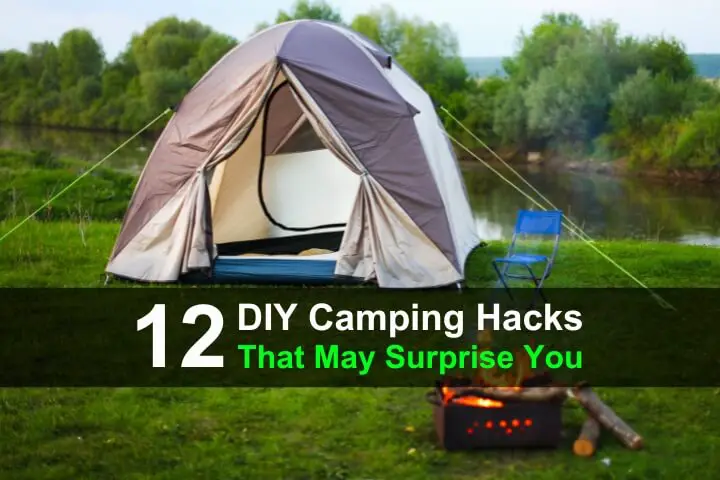Estimated reading time: 16 minutes
Permaculture is a form of organic gardening that attempts to embrace the conditions in an area to create a garden that is both sustainable and to some degree regenerates itself.
It involves common practices like composting, rain water collection, mulching, and companion planting to create a garden that improves over time. It also employs some new ideas related to garden design, strategic planting, and a careful evaluation of a garden’s performance so you can make adjustments over time.
The idea and the name permaculture was first developed in 1980 by a couple of Australian scientists who touted the idea of “permanent agriculture.” It was a concept motivated by the harsh extremes of the Australian outback, and was an effort to create a garden concept that could sustain itself across a range of conditions.
The sustainable model led to 12 fundamental principles that define a permaculture garden. We’ll provide links to more information about some of the nuances of permaculture as we go, and end with a good list of links to articles and videos that demonstrate many of these practices.
Want to save this post for later? Click Here to Pin It On Pinterest!
The 12 Principles of Permaculture Gardening
1. Observe and Interact with Your Garden

This is all about assessing where you live and what impact the type of soil, precipitation patterns, average temperatures, and other factors will have on your garden.
If you live in an arid environment with high temperatures and infrequent precipitation, you would interact with those factors by choosing plants that are drought and heat tolerant. A style of gardening known as Mediterranean gardening is worth looking into if you live in a dry climate. A dry garden is another concept.
If you live in a wet or cool environment you would plan for plants that could tolerate late and early frosts or freezes and saturated soil.
If both temperatures and precipitation are inconsistent or variable you would actively engage rain collection systems while selecting hardier plants that can survive fluctuations in temperature and precipitation.
The first step is all about understanding the impact your particular location and environment will have on anything you plant. The result is that you’re not constantly doing battle with temperature and precipitation extremes.
2. Capture and Store Energy in Your Garden

The ability to capture rainwater, compost materials, build fertile garden beds, and position your garden for the best sunlight or shade are examples of how you can capture and store energy that fuels a garden.
Rainwater collection makes a lot of sense for any garden, and setting up a rainwater collection system leading to a collection barrel or barrels will allow you to save money and always have a ready supply of water easily available.
Burying a soaker hose throughout your garden that’s connected to a spigot on your rain barrel could make it easy to continuously water your garden. Some people attached a soaker hose to the overflow valve at the top of a rain barrel so any runoff from the barrel is directed to the plants.
You could also create a wicking bed in your garden that will keep plants watered long after the rain. Just think in terms of all the things you can do to make your garden sustainable.
Aggressive composting of all organic materials from leaf litter to dead plants in the garden allows you to reintroduce nutrients. Continuous improvement of soil quality in garden beds is a foundation of permaculture and composting is a giant step towards that goal.
Strategic planting of your vegetables, fruits, flowers and herbs can allow you to not only take advantage of companion planting, but would put taller, sun loving plants towards the south side of a garden where they could capture full sun, while their shade could provide the ideal environment for shade loving plants planted north of the taller plants.
Native people used a similar idea sometimes referred to as the “3 sisters.”
They planted corn, beans and squash together. The corn provided shade and a tall growth for the beans to climb on. The beans returned nitrogen to the soil feeding the corn while they coiled up the corn stalk. The squash grew in the shade under the corn and beans and also reaped the benefit of the nitrogen from the beans. This approach maximized the use of space with a symbiotic relationships between the 3 plants.
Companion planting is used throughout a permaculture garden to not only put plants together that are compatible, but avoid close planting of some plants that just don’t get along. Onions and garlic are two examples of vegetables that can cause stress or problems with other plants. On the other hand, legumes like beans and peas are the garden champ as they constantly regenerate the soil with added nitrogen.
Mulching is an excellent way to hold and preserve water in your garden. Mulches include wood chips, bark, leaves, wood shavings and even torn paper and mulching fabric. It’s usually a good idea to top any fresh layer of compost with a mulch that can and will eventually decompose while protecting the soil from the sun and heat.
Consider a winter cover crop after harvest. Cover crops are used to add organic material to soil between planting. Traditional cover crops include rye grass or clover. The cover crop is turned into the soil in the spring and topped with fresh compost before planting.
3. Garden for a Yield

This gets down to determining basically what you want from your garden. Some people are simply looking for vegetables and fruits to eat. Others may be focused on herbs for culinary and medicinal purposes. Still others may be thinking about flowers for arrangements or simply to enjoy.
An interesting aspect of permaculture is that it often encourages all of the above. The careful planting of vegetables, fruits, flowers and herbs can add to a healthy diversity in the garden.
- Vegetables provide food to eat while creating varying levels of shade in a garden for shade loving plants, or add nitrogen to the soil in the case of legumes.
- Flowers attract pollinators to the garden advancing the pollination of many vegetables and fruits growing next to the flowers. Some flowers like marigold also act as barriers to pests like rodents and even some insects.
- Fruit trees and bushes can grow above or behind a garden to maximize the use of space and also create some strategic shade for shade-loving cruciferous vegetables like cabbage, kale, broccoli and Brussels sprouts.
- Herbs can be highly tolerant of growing in fringe areas and beneath and around other plants. Perennial herbs like oregano, rosemary, and thyme can grow year after year with little complaint and a regular harvest.
4. Apply Self Regulation and Accept Feedback from Your Garden

To put it simply, keep a journal. You want to track how your overall garden is doing. If a certain plant or variety doesn’t seem to be performing well, pull it and compost it and consider another variety or plant.
The ability to track the performance of your overall garden is a big part of permaculture. The first season or two will be a pattern of some trial and error, but maintaining and sustaining your garden over the long-term is what makes permaculture permanent. Accept what your garden is telling you and make adjustments as you go.
5. Use and Value Renewable Resources from Your Garden

This gets back to ideas like composting and rainwater collection. But it goes beyond those basics to ideas like seed harvesting, succession planting and mulching.
Seed harvesting is a standard practice in permaculture. You ability to let some plants go to seed, or to harvest seeds from different fruits and vegetables is a giant step towards sustainability.
Many of us continue to be stunned at the prices for a small packet of seeds. A permaculture gardener literally grows their own. Just make sure you’re planting an heirloom variety of plant. Many GMO plants don’t germinate well.
Succession planting is another permaculture practice. Some vegetables mature quickly in as short as 30 to 45 days. Radishes are good example. Depending on your growing season, you could potentially get 2 to 3 harvests when you plant a second or third crop after the first harvest in a season.
Perennials are a common feature in permaculture gardens. Some permaculture gardens have only perennials planted in an effort to in fact make the garden totally sustainable and permanent.
Look for flowers, herbs, fruits and vegetables that come back year after year. With a proper rain water collection and distribution system, occasional side dressing of compost, and occasional weeding you could have a very low-maintenance garden year after year.
Compost, compost, compost. We’ve mentioned composting but it’s a foundation of an organic, permaculture garden. Permaculture avoids the use of chemical fertilizers, insecticides and any other chemical addition to a garden.
Compost is king when it comes to fueling growth and health in a garden so make sure you aggressively collect and compost all organic materials you produce at home, whether it’s dead plants from the season, or kitchen scraps from your garden harvest.
6. Produce No Garden Waste

Some of us find ourselves with bushels of tomatoes in August. How many end up rotting and relegated to the compost heap. Sometimes, even composting is a waste of your gardening efforts. A permaculture mindset would lead you to either can and preserve them, or at least find a way to give away those tomatoes.
And for those cucumbers that seem to over ripen to a golden, yellow. Those are the perfect cucumbers for a seed harvest. Permaculture never wastes a resource whether it’s rainwater or everything we grow. The three “R’s” of reduce, reuse and recycle are a standard mantra and if you can’t preserve or use what you grow, share it or at the very least put it in the compost heap.
7. Design from Patterns to Details

This is about considering the overall design of your garden and the little details that make it work. Here are few ideas popular in a permaculture garden.
Paths designed for access not only for harvesting but to a location for a place to sit and enjoy your garden; access to rain barrels or other equipment or supplies located in and around the garden, and even easy access to areas of the garden that may require weeding.
Locate plants based on use in and around your garden. Herbs that you might use daily for cooking should be located closer to your home, while long-maturing fruits and vegetables can be located father away.
Trees can be planted anywhere in or around your garden but be mindful of the shade it creates, and if fruit might fall from the tree think about what it will land on and whether or not you can find it in the marigolds and beets.
Raised beds are a common sight in permaculture gardens. A raised bed allows you to contain the biome and focus on the soil contained in the bed. It also makes access to your maturing plants easier as you walk along the paths defined by the raised beds.
A height of 8 to 12-inches for a raised bed is usually recommended assuming the roots can still penetrate the soil resting below the bottom of the bed. If on a patio or deck you can build the bed to be taller to increase the soil depth.
Track the sun and think about how sunlight will hit your garden over the course of a day. That should guide some specific details about where you locate sun-loving or shade-loving plants. Remember that the shade of a tall plant can also keep shade plants like kale and hostas cool.
8. Integrate Don’t Segregate

Don’t plant in rows. We sometimes think we need to plant everything in neat rows in our gardens. That’s essentially taking the approach of large scale agriculture and applying it to a small scale, backyard garden. The reason farmers plant their crops in rows is because it’s the easiest and only way to farm with heavy machinery.
A permaculture garden is a series of garden beds that recreate the way plants grow in nature. Square foot gardening is a concept that captures this idea, but you don’t need to limit your planting to a square foot. Plant various vegetables, flowers, and herbs in clustered groups. Put a patch of carrots in one part of the garden and a cluster of beets in another.
Inter-planting is another concept often seen in permaculture gardens. The 3-sisters idea we mentioned earlier is one example. If a plant grows long and tall above the ground, check if a shorter, ground hugging plant is compatible and plant them underneath the taller plants. If your soil is well fertilized with compost and watered sufficiently the grouping of plants above and below will grow without stress.
9. Use Small and Slow Solutions

A permaculture garden is a long-term proposition. The over-riding idea is that the garden will grow and mature and improve over time. The time frame is measured in years. The idea is that year after year and season after season the garden will become healthier and stronger as the soil is continuously improved, and your journal guides and directs what and how you plant in the future.
One way to effect a slow solution is sometimes referred to as “Lasagna gardening.” This is a soil preparation technique that does not involve roto-tilling or digging or disrupting of the soil. A patch of grass in marked out and sheets of newspaper are laid over the grass.
These are then topped with layers of mulch, compost, more newspaper, straw and topped with compost. This is best done in late summer of early fall so the layers can decompose over the winter.
Vermiculture is another slow solution. This involves composting with the addition of worms to the compost to not only accelerate the breakdown of organic material, but to capture the worm castings that the worms excrete.
This is considered the black gold of composting and will have a significant and positive affect on your garden. And while you’re at it, make sure you toss some of those worms directly into your garden as they reproduce.
Continual and consistent addition of compost to your permaculture garden is a standard practice and allows you to achieve the continuous improvement of your garden soil from one year to the next.
10. Remember to Use and Value Plant Diversity

This is about trying as much as possible to keep a diverse group of plants growing in your garden. Here are a few things to consider.
Plant flowers that attract pollinators. You may wonder why you need flowers if you’re just gardening for food, but your overall yield of fruits and vegetables can increase if pollinating insects are attracted to your garden. There are certain flower varieties you should consider and keep in mind that you probably want flowers that you could bring inside for a centerpiece.
Explore heirloom varieties as you shop for seeds and remember to harvest those seeds carefully as your plants mature. You may have some cross-pollination across varieties but that’s the kind of experimentation that makes permaculture both exciting and rewarding. Just remember to record in your journal what variety of seed you’ve harvested and track the results.
Track your companion planting efforts. If you plant companion plants next to each other, make sure you keep an eye on varieties that were isolated from those companions. If you see a noticeable difference, maybe make sure you interplant them the following season. It’s all part of journaling your efforts and progress.
Crop rotation is another consideration from one season to the next. This is an agricultural practice worth considering. Some plants like corn, root vegetables and squash are heavy feeders. As we already noted, legumes like all beans and peas return nitrogen to the soil. Think about rotating where and what your plants so your garden plants can revitalize the soil as they grow.
11. Uses Edges and Value the Marginal Areas

This is about using every inch of space in a garden. This is especially true along the margins and edges of your garden. Look for plants that might grow low to the ground or consider it an opportunity to plant some perennial herbs.
Just be careful about planting plants like mint or chamomile that are known to spread aggressively. Chives or thyme are a good choice or marigolds to hold off the rodents.
12. Creatively Use and Respond to Changes

A lot of factors can and will change in and around a garden over time. This could include weather patterns, improving soil health, or experiments with new types of plants, varieties or amounts.
This is another reason why a garden journal is so important. It will not only allow you to blueprint your garden design and planting, but respond to results both good and bad.
Don’t think of any failure as a setback, think of it as your garden’s way of telling you to change course and try something different. Better yet, embrace any success and remember to repeat past best practices to continue with the positive results.
You May Already Be a Permaculture Gardener
Many of the things we’ve covered that define permaculture gardening are standard practices for many gardeners. Hopefully you’ve found some other ideas that you can try. If you think about it, it’s fairly easy to move from traditional gardening to a full permaculture effort. For any serious about gardening it just makes sense to find a way to make your garden better year after year.
Like this post? Don’t Forget to Pin It On Pinterest!
You May Also Like:


















